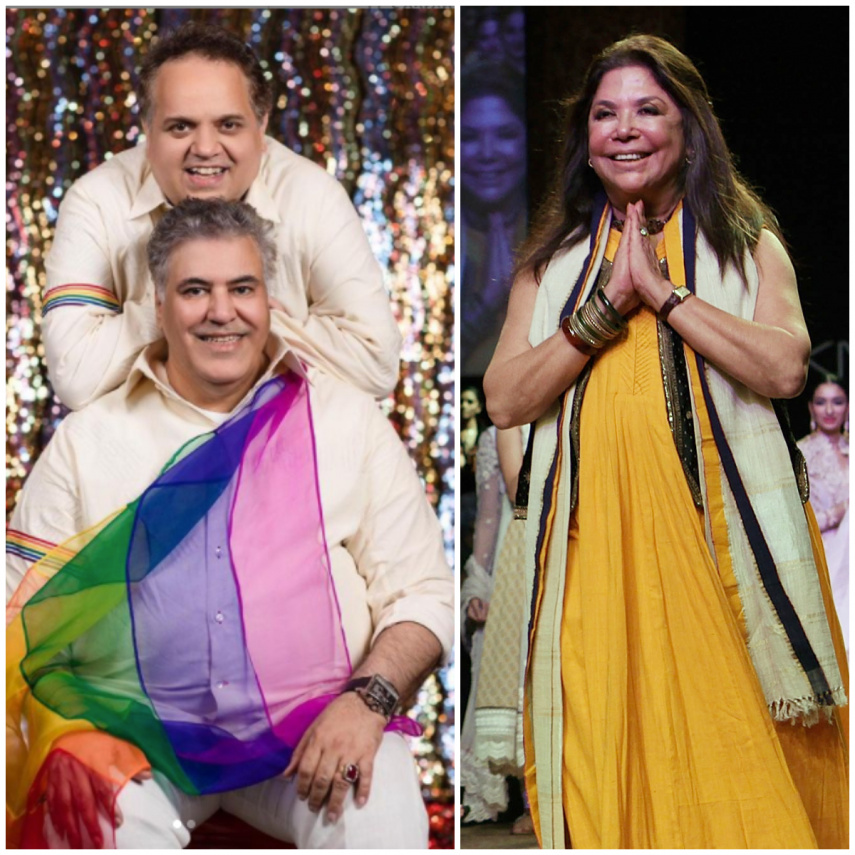EXCLUSIVE: Abu Jani & Sandeep Khosla, Ritu Kumar & more designers on favourite weaves, preserving Handloom
On the occasion of National Handloom Day which is celebrated on August 7 every year in India, the country's top designers talked to us about their favourite weaves, how we can preserve India's handloom heritage and more. Read on!

The primary objective of celebrating August 7 as National Handloom day, is to bring forth the contribution of the handloom industry and help increase the income of weavers in India. The first National Handloom Day was celebrated in 2015 and has since become a day when designers bring forth the importance of the industry, especially in the field of fashion.
We got in touch with some of the top designers in the country, who have time and again styled a number of celebrities in their outfits. They talked exclusively to us about their favourite weaves, how we can preserve the handloom heritage and more.
Designer duo Abu Jani and Sandeep Khosla have clocked more than three decades in the fashion industry. The duo has inculcated weaves into their creations and feels they are spoilt for choice when it comes to Indian weaves. "Each weave has its unique beauty and allure. Be it a Kerala cotton, a Banarasi or a jamdani. They are absolute treasures. For us, Khadi will always hold an especially cherished place in our hearts. It is the Fabric of Freedom. Of independence. Of India," they chime. As designers, Abu and Sandeep believe that a way to carry forward the handloom legacy intelligently is "By a lavish and exuberant use of handloom in our creative expression. Sustaining the craft, making handloom coveted and keeping it in style."
Deepika Padukone in a creation by Abu Jani and Sandeep Khosla
The iconic duo believes that both consumers and designers can preserve India's handloom heritage in small ways. "As consumers and citizens, choose to buy handlooms. It’s as simple as that. Go for quality. Be willing to pay well for that quality and craftsmanship." And as for the designers, "We must choose to explore the abundant use of handlooms in our expression. In fashion, accessories and home products. The public and private sectors must invest in the handloom industry. Ensuring infrastructure, good working conditions, fair and generous remuneration. Crafts die out when it is no longer economically feasible to create. This must be avoided through adequate investment," they opine.
Radhika Apte in a Ritu Kumar creation
Padma Shri awardee Ritu Kumar believes that by switching to handlooms, the amount of waste produced by the fashion industry can be controlled. "Waste is caused by fast fashion which is cheap and often synthetic. Handlooms are rarely thrown away and can be recycled," she shares. When it comes to preserving India's handloom heritage, the designer shares a similar opinion as AJSK on the matter. "Consumers can contribute to alleviating the weaving community’s pain and help in bettering their living conditions. As designers should make a conscious effort to imbibe our age-old traditions into the garments we produce, consumers should also include handlooms in their wardrobes, thus empowering the weavers to keep traditions alive. Together we can support the weaving community, and celebrate India’s rich design legacy," she opines.
Vidya Balan in a saree by Vedika M
Known for her whimsical prints and unusual silhouettes, Vedika Mehr's creations are known for their vibrant hues and block prints. For the designer, handlooms initially conjured up a different image like "Beige kurtas, dupattas, starched sarees, or even home furnishing. Although it’s taken a while, it has finally become a buzzword for people like you and me. The last 10 years have seen a boost in the cameos Indian handlooms have made in the international circuit as well, with humongous design houses like Louis Vuitton even having exclusive Diwali collections with handloom representation." When it comes to picking a favourite, she can't get enough of satin. "It always amazes me how the satin weave can transform a simple roll of yarn into this beautifully glossy, lustrous fabric," she shares before sharing her two cents on how we can preserve India's handloom heritage. "Only when people are made aware of the good they’d be doing the world by embracing handloom will we actually make a change," she says.
Gauahar Khan in an outfit from pink City
With an eye for detail, Kolkata-based Sarika Kakrania, founder of Pink City believes that handloom is not a trend or a fad, but is actually our past, present and future all in one. "The historic importance of handloom is not the only reason to adapt all of it in our current fashion scenario, the versatility is a bigger reason. You can create a variety of products using the intricate varied handloom weaves. With magnified use and awareness, our beautiful handlooms are here to stay and we wouldn’t have it any other way," the designer opines and even reveals a weave that's close to her heart, "I personally love the Gharchola and try to use it in my brand as it really looks gorgeous when used in a contemporary fashion, and even in the no-nonsense silhouettes like straight kurtas."
ALSO READ: Happy Birthday Kajol: 7 Times she proved her wardrobe has an abundance of whites in every silhouette





 JOIN OUR WHATSAPP CHANNEL
JOIN OUR WHATSAPP CHANNEL






































































































